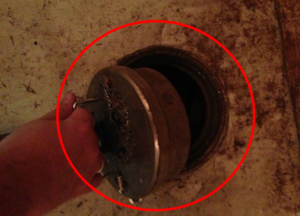
Authorities have reported that a 13-year-old girl who was kidnapped two weeks ago from her Texas home has been discovered imprisoned inside a shed in North Carolina.
According to Davidson County Sheriff Richie Simmons, the adolescent was discovered by police on a residential property in Lexington, North Carolina, roughly 60 miles northeast of Charlotte, on Friday evening.
Simmons claimed that after being recovered, the girl received medical care and has since been returned to Texas.
A 34-year-old local man named Jorge Ivan Santos Camacho has been detained and is facing charges of kidnapping, felony restraint, human trafficking, and two counts each of statutory rape and statutory sex offense with a minor.Camacho made his first appearance in court in Davidson County on Monday and is currently being held there on a secure bail of $1.25 million.
According to online posters for the missing youngster, police in Dallas have been looking into her disappearance since the morning of March 1.
Authorities discovered during the inquiry that the girl had been corresponding with the suspect on social media before going missing.
Simmons claimed that the conversation’s content was in line with grooming and enticement, and that he even persuaded the woman to leave the house where he had picked her up in the neighborhood.
A car with a Davidson County address was seen on video cameras near the girl’s house.According to a Davidson County Sheriff’s Office press release, the girl was located and “did not appear to have any physical injuries.” The shed where she was found was locked from the outside on the Lexington property where the suspect also lived, Simmons said.
Simmons said his message to those listening is that they need to understand the dangers social media poses to children.
“This is becoming a major problem and this is how kids are sold into human trafficking. They’re not being able to be kids And how a 13-year-old would think it was a good idea to leave the home? What are we teaching our kids at home? It scares me,” he said.
“If it doesn’t stop at home, it comes to the schools, and the teachers have that responsibility, and if doesn’t stop there, it comes to us, unfortunately.”






